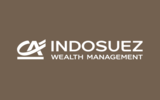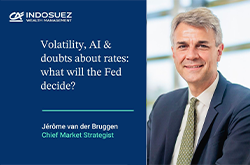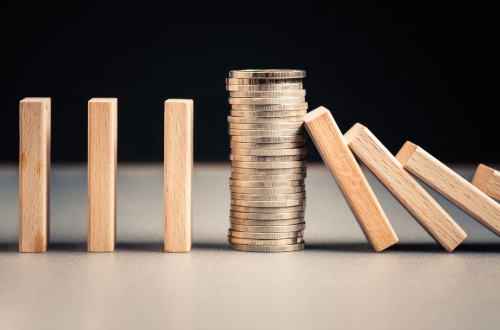For a few dollars more?

Monthly House View - April 2020 - Download an excerpt here
Most investors are scratching their heads when they contemplate the magnitude of the equity correction that has occurred in just four weeks: a straight and breath taking 40% drop in European equities synchronised with the acceleration of new COVID-19 cases in the old continent, and a massive repricing of most assets in the world.
What is surprising asset allocators as well is to see that safe havens no longer play the role of shock absorbers in portfolios.
Is this correction excessive? Is there some rationality behind this? Why should gold start to lose its shine in a bear market with a return of the zero interest rate policy (ZIRP) at the Fed? Why do the markets not react positively to the significant rates cuts decided by the Fed?
The obvious answer is that markets are pricing in a more severe economic scenario and significant disruption in earnings: this is a global reality check on growth and risks, with some excess due to contagious fear. In this context, the significant monetary and fiscal support was not able to calm markets down.
A second answer can be found in investors' positioning and leverage which generally exacerbates volatility. Over the past years, central banks have compressed yield curves and pushed investors outside their natural hunting zone, to chase yields in new territories with more risk and less liquidity. This has led to a significant compression of credit spreads, whilst lower interest rates justify higher equilibrium price/earnings ratios in equity markets. Moreover, cheap money has encouraged the democratisation of leverage as a standard investor way of life, based on QE infinity and the belief that less cyclical economies should mean less cyclical markets. This is now being blown away by a pandemic with far-reaching macro-economic effects.
After a terrible December 2018, and a bull recovery in 2019, 2020 was not starting on high hopes of performance but at least with a relatively calm environment, which encouraged investors to chase after a few more dollars. This pandemic seems to be the catalyst of the reversal of the carry trade, and comes as a reality test for most investors. It tests our nerves, our capacity to bear risk, to cope with unprecedented volatility and a new form of uncertainty; it is a reality test on the sustainability of investment strategies based on the accumulation of leveraged risk premiums. It reminds us that leverage not only increases risk, it also shortens the time horizon of investors and affects their psychology.
There is a lot of rationality in the correction given the negative macro-economic effects of preventive measures and bearish psychologies, and subsequent impact on corporate earnings and default rates. But the magnitude and the speed of this correction are probably explained by the unwinding of this accumulation of leveraged strategies, and this unwinding probably accelerates when volatility and negative returns become unbearable. This is what is called the “Minsky moment”. This unwinding may also explain why not only are equities and corporate bonds losing ground, but also safe havens. So we should not blame it all on the COVID-19. There is certainly some overshooting in this correction, and the explosive cocktail of viral fear and margin calls can only amplify that before markets rebound and find a new equilibrium.
If this pandemic peaks in the next months and if the unwinding does not create more permanent effects on corporates and banks, we are probably not far from that stabilisation point. History tells us that most market corrections take place in a few weeks, followed by a few months of volatility and a sharp rebound thereafter. We can also expect that the European Central Bank's (ECB) announcement of a EUR 750 billion emergency purchase programme should help to anchor anticipations, ease the sovereign spreads and stabilise the yield curve.
Monthly House View, 25/03/2020 release - Excerpt of the Editorial
March 26, 2020




